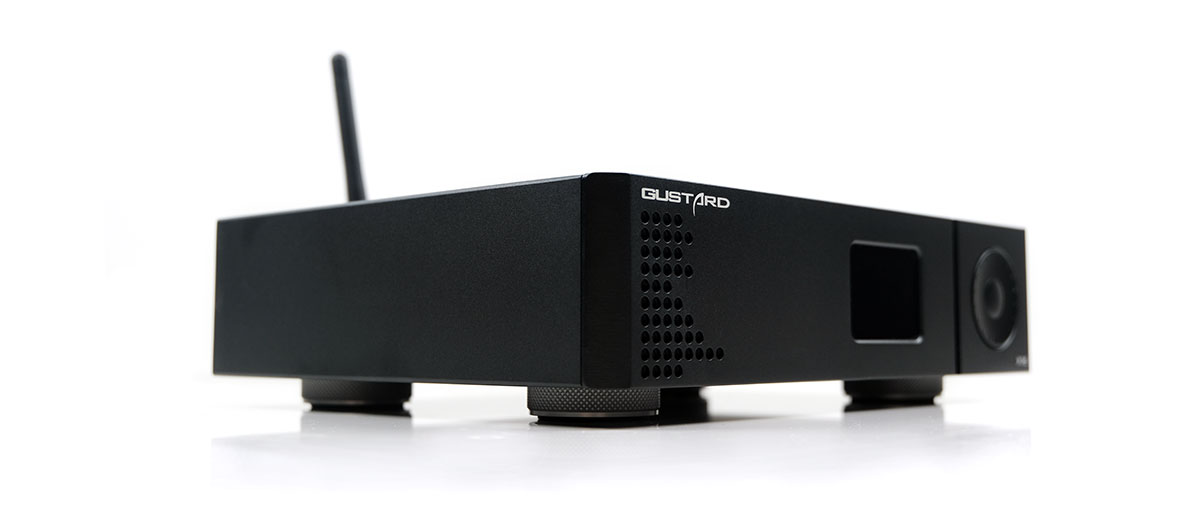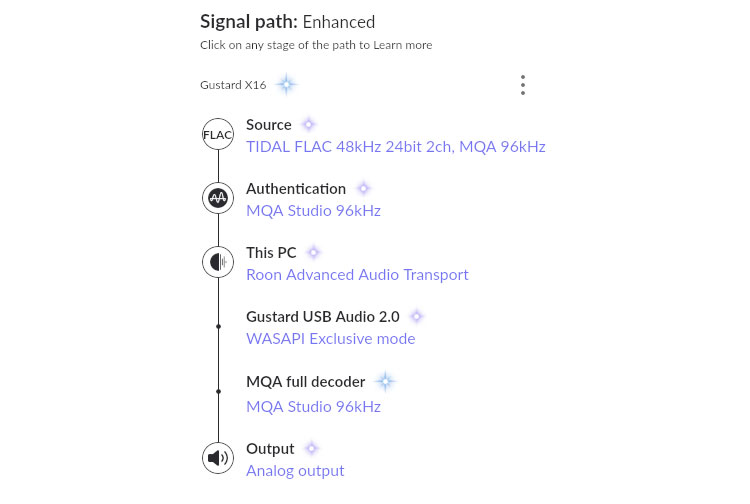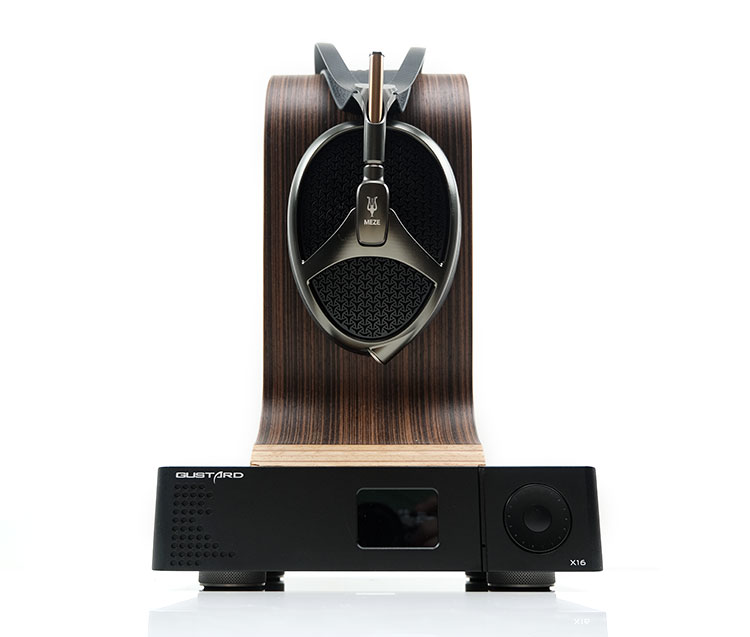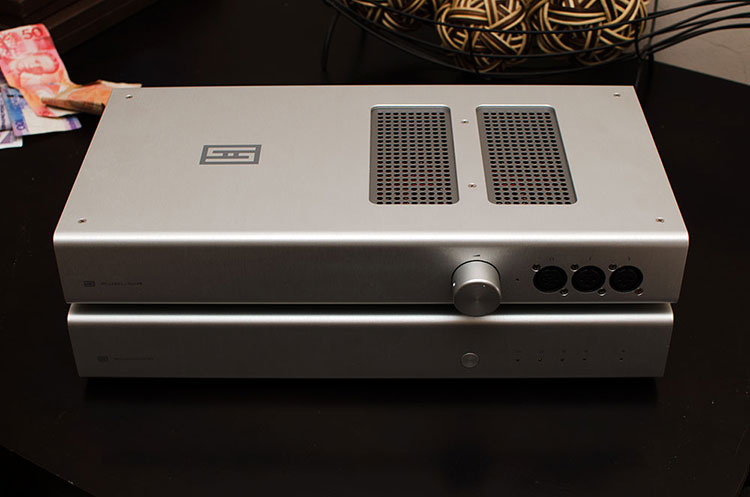Synergy
I²S
Unfortunately, I could not test I²S which I was quite looking forward to. I suspect the configuration on the X16 is slightly different from either the cables I used or the connected units I tested it with.
The test units were a Cayin iDAP-6 and a NuPrime CDP-9, both of which offered additional functionality such as CD transport and in the case of the Cayin, network lossless streaming. In the case of the Cayin, it was stuck on DSD64 with a rotten broken signal and nothing at all from the CDP-9.
Three HDMI cables were tested, all of which I know works between DACs such as the high-end Musician Audio Pegasus and the Cayin iDAP-6 so it might not be the cable but rather the X16 I²S configuration.
If you want to use a streamer you can opt instead for a coaxial or USB connection if one is provided which the Cayin iDAC-6 does offer for connectivity with the X16.
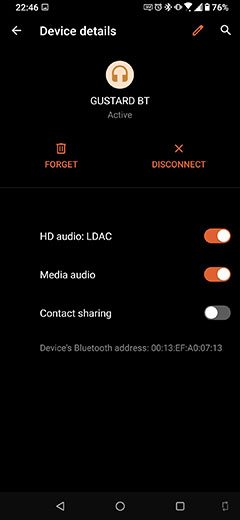
Bluetooth
Sound quality via Bluetooth on the X16 will depend a lot on your source transmitter. However, let me first say that LDAC is the only way to go with the X16 on portable sources because when LDAC on our tested DAs and smartphone was turned off everything just died in terms of volume and dynamic range.
I suspect the next stop on some sources is SBC quality and even with full volume it just won’t cut it. With the iBasso DX300 DAP, it would not even give me playback without LDAC switched on.
We had more success with aptX Classic on Windows 10 though personally, I found it a bit soft and lacking in definition on the low-end compared to LDAC and less resolving in terms of top-end presence. I expected that and it’s nothing to do with the X16, rather a trait of aptX versus LDAC.
Going back to how your source influences sound quality. Now, normally, I would recommend a smartphone over a DAP for range and true enough the smartphone does better if you need a rock-solid signal for far away with the X16. However, if the BT transmitter device isn’t then there are better options.
For example, the iBasso DX300 totally outperformed my Asus Rog Phone 3. Not only had it more volume but the dynamic range was significantly better making the Rog Phone 3 sound soft, dull, and lacking in power. You can up the volume on your amp to compensate for the Rog Phone 3 but it still sounds soft on the treble and not as well separated or as resolving as the DX300.
MQA
MQA integration was very smooth using the X16 linked to both TIDAL desktop and TIDAL via Roon. Unfolding and rendering did not skip a beat with a very accurate and fast lock onto the sample rates via the OLED display from both applications.
Although not officially a ROON Ready device, the ROON functionality for MQA sampling seemed quicker than the native TIDAL app, but, we are talking microseconds here.
Amplifier Pairings
(Testing using a Hifiman Sundara and Meze Empyrean).
The Gustard X16 does not offer any overt coloration like an R2R DAC can, such as the aforementioned Pegasus. Nor, does it deliver any traditional ‘Sabre treble glare’ to most amps we tested it with. It has a relatively clean, highly resolving tone, but becomes a little more rounded and smoother with the NOS mode switch on.
It also has a high degree of transparency and thus flexibility in that regard with only NOS really showing anything but a nuanced effect on the core signature of the amp and your headphones. You can pair it with a tube or solid-state amp, bright or warm, and it should remain a relatively neutral component in your setup.
Everything else is down to context and preference because in our comparisons below you will find some DAC’s sound brighter, with more forward and vivid upper-mids and treble whilst other DACs, such as the Schiit Gungnir will sound more aggressive and meaty.
Tested Amps
What I can say for all our tested amps is that the X16’s background was impressively black. The amps including the current mode Bakoon HPA-01, the Monolith Liquid Platinum tube amp, and the RNHP.
Out of those three, the HPA-01 was the most impressive from a technical perspective in SE mode. The dynamic range and precision of the HPA-01 were marvelous with the X16. The timbre is just slightly cooler and more neutral than the Platinum but the control on the sibilance and treble paired with the Sundara was outstanding nevertheless.
The Platinum is a great match if you feel the X16 is not as aggressive as you would want it to be on the low-end. The X16 bass response is relatively neutral though not as dry or lean so paired with the Platinum, which is known to be a punchy and warmer sounding amplifier, gives the presentation a weightier and fuller sound.
This combo is not quite as dynamic or as nimble as the HPA-01 but it is sweeter tube tone is more forgiving with that warmer low-end and the X16 simply does not get in the way of that core amp tuning.
The RNHP sat somewhere in between the two previous amps with a relatively physical and full-bodied tone but not as sweet as the Platinum. It is not quite as powerful as either of the two amps so the dynamic range is not as gripping as the HPA01 but still very good with the X16.
I do advise keeping NOS off with this amp to ensure it remains as vibrant and airy as possible because its staging is more on the intimate side.
Select Comparisons
(Comparison work completed with the Auris HA-2SE analog amplifier and the HIFIMAN Sundara).
Pro-Ject Audio Pre Box S2 Digital
$399
Technical
The Pre Box S2 Digital is actually an integrated DAC and amp but I have never really found the headphone output to be its key strength. Its DAC and preamp qualities are its key calling cards. Like the X16, the S2 offers a Sabre chipset implementation for DAC duties with a dual ESS9038Q2M implementation.
The X16 uses the new ES9068as in a dual configuration which has the additional onboard MQA rendering up to 384kHz. The S2 is also capable of MQA unfolding though directly from the DAC and it is a lower level at 192k. Both units can decode up to DSD512 and PCM 32BIT/768kHz for alternative codecs as well as the S2 being Roon Ready.
Dynamic range is a shade higher on the X16 at 126dB compared to 124dB with the X16 benefitting from balanced as well as SE analog outputs whereas the S2 only has SE dual RCA outputs. That does mean the X16 can supply a better level of voltage to amplifiers at 4Vrms balanced though both it and the S2 are a maximum of 2Vrms for SE.
One final observation is the PSU with the X16 using a linear toroidal setup whereas the S2 shifts the power to an external 5v DC switching power supply adapter. Though you can technically run the S2 direct from ta USB output given its connection is a USB socket some have claimed that the S2 performs better with a dedicated linear power supply also.
Design
If you think the X16 is small then the S2 Digital is going to rewrite your concept of what compact is. It is perhaps the smallest desktop DAC, (and amp), that I have reviewed to date with this number of features. It is perhaps one-fifth the volumetric size of the X16 at 10.3 x 3.7 x 12.2cm and 366g compared to 22 x 5 x 17 cm and 2.5Kg.
Of course, that means sacrifices to get everything in but not as much as you might think with the S2 both a DAC, headphone amp, and preamp. It does lack a few features the X16 offers such as I²S, AES, and balanced analog outputs. The LCD size, whilst benefitting from a clear color display, is also a lot smaller.
Both have remote controls and here I think the S2 Digital might have a bit more in terms of direct access to features such as the 7 filters as opposed to the X16’s 3, and additional playback control for ROON and TIDAL.
The X16 remote is a little more basic in that regard though still quite functional. However, the menu system is a lot easier to navigate and read with that larger screen whereas the S2 is a rating single option per screen system and more cumbersome.
In terms of alternative features, there is a difference in focus with the S2 offering ‘Distortion Compensate’ which enables or disables the on-chip distortion compensation feature. The X16 opts for NOS disabled or enabled for oversampling purposes. The X16 also offers wireless BT whereas the S2 requires one of the company’s Streambox or BT Box add-on modules.
Performance
Despite both using Sabre chipsets the tuning from these DACs have a few notable differences. The first is the treble tuning combined with the upper mids timbre on the S2 which is a little brighter, more forward but harder-edged.
I do not really get a huge amount of traditional Sabre glare from the S2 top-end but compared to the X16 it is not quite as smoothed out with some shaper overtones that creep into higher-pitched female vocals and percussion timbre.
Now you could argue that Gustard has rolled off the top-end ever so slightly but that would be a contextual position simply because the S2 displays a bit more splash and sibilance from a treble that is more forceful. It certainly does give an impression, at least going single-ended, that the X16 does not offer the same level of brilliance right at the top.
The pay-off, however, is much smoother fuller midrange, and a slightly weightier low-end from the X16. Vocals lack sibilance on the Sundara which is always a good thing whereas the S2 just tips the Sundara a bit more to the sharp side of things and also a more forward vocal image.
The X16 low-end weight has the better body and that extends also into the lower-mids instrumental timbre. The X16 offers just a bit more warmth and a rounded tone to its bass delivery whereas the S2 is drier, punchier but thinner with the Sundara.
Schiit Gungnir
$899
The Gungnir non-Multibit has been out for a while and aside from a USB upgrade, it has remained largely unchanged since then. This has been a stalwart in our office for years and a good benchmark for up-and-coming DACs with new tech to compare against.
Technical
The Gungnir uses a dual-AK4399 delta-sigma implementation which is perhaps a little dated now compared to newer chipsets such as the ES9068as inside the X16.
Decoding is more limited to 24BIT/192kHz PCM with no DSD capability though that is by choice from Schiit rather than a design limitation. The company has never been much of a fan of DSD with even their TOTL Yggdrasil offering the same decoding level for PCM and no DSD. MQA is also a no-go.
By contrast, the X16 is fully loaded with its ES9068as onboard MQA decoding, DSD512, and up to PCM 32BIT/768kHz decoding. It is perhaps a little more opamp-driven though compared to the discreet analog topology of the Gungnir which gives Schiit a bit more control over final tuning for pre-amp and fixed-line output.
Both offer similar analog output capabilities with the two DACs capable of SE and balanced output to the amplifier of your choice. Vrms is matched at 2V each for SE and 4V for their balanced outputs. One slight advantage the Gungnir has is that has two SE outputs as opposed to the one on the X16 so you can hook up a fixed and/or preamp system at the same time.
I presume noise measurements are on a similar weighting and if so then the X16 does have the lower noise floor of the two with a THD+N of <0.0001% compared to the Gungnir at <0.002%.
Design
The Gungnir is probably one of the larger DAC we have here in the office measuring in at 40.64 x 5.7 x 22.22cm compared to the X16’s more compact 22 x 5 x 17 cm. It also weighs precisely double the X16 at 5kg compared to 2.5Kg.
However, I do love the design of the Gungnir, it looks impressive and you do feel like you are getting your money’s worth aesthetically speaking with that sleek and smooth aluminum finish and frontal curving. The X16’s black or silver is good but it feels a bit more muted with only fleeting accents to lift the aesthetics.
Operability is better on the X16 with dual controls via manual and remote as well as that OLED screen to see what is happening. The Gungnir is much more traditional with its icon and button array for which input you want. There is no display screen or menu system so status feedback aside from the far-right poor clocking light warning.
Connectivity is similar aside from the obvious lack of wireless connectivity on the Gungnir whereas the X16 can offer up to BT LDAC as a receiver. Both have SE and balanced analog output with the Gungnir offering an additional SE dual RCA.
The two DAC’s also offer a full range of digital with USB, optical, and coaxial but diverge beyond that with the X16 going for additional AES and I²S inputs and the Gungnir offering a single BNC.
Performance
The Gungnir is a much more aggressive sounding DAC compared to the more neutral X16. You can hear it in the forcefulness of the low-end, the more aggressive and slightly thicker lower-mids, and the immediacy of the upper mids.
Mind you that has been somewhat of a trait of AKM chipset tuning, even way back with the AK4490EQ in DAPs. And with that comes that slightly metallic upper mids range and lower-treble performance. It is not too dominant on the Gungnir to be fair but it is drier sounding compared to the X16.
Now the X16 might not have the same ‘beef’ downstairs but it does have a more polished delivery. The background is blacker and the separation is better than the Gungnir so you trade outright ballsy musicality for better refinement.
The same goes with the mids. The Gungnir pushes everything forward, it can sound visceral at times and I know some like that. My Empyrean’s like that and so also my LCD-2‘s. The Sundara less so and electrostatics are a definite no. Sometimes it is less noticeable with meaty soulful vocals but once you throw in a faster-paced track, head vocals, or synth claps it can grate.
The X16 does it a little differently. The aggression is not there, the mids on the HA-2SE are more linear or neutral for me in terms of imaging. The timbre is just a tiny bit softer on the attack right up into the upper-mids and treble. Overall, the presentation sounds more coherent. Perhaps not as exciting or energetic as the Gungnir but more balanced and less fatiguing.
Our Verdict
The Gustard X16 is exactly what I would expect a modern DAC should do and that, in my books, is an excellent thing indeed. I honestly cannot find much at fault with how the Gustard X16 generally performs.
It is packed to the gills with what most audiophiles would want to see in this day in age. That includes top-tier decoding rates, MQA native rendering, and plenty of I/O including a balanced pre-amp option. Not only that but a solid BT LDAC performance that is almost a pre-requisite in mid-fi DACs these days.
Are there caveats? One or two to be fair. The first was the I²S connectivity issues though this could be anecdotal rather than a rule of thumb. However, it is compatibility is worth checking if you want to hook up a streamer or CD player via the X16 I²S. The second was the NOS performance which I felt was a little too flat and rounded in tone for my personal liking.
The competition is very tight now at this price point, but this is a solid piece of kit with plenty of features and a transparent detailed sound signature to gel well with a wide range of analog headphone amplifiers.
Gustard X16 Specifications
- DAC chipset: (2) ES9068S DACs
- Processor: XMOS xCORE-200 series 16-core XU216
- Digital processing chip: ALTERA CPLD logic array chip
- (2) ACCUSILICON femtosecond crystal oscillators
- Op-amp: OPA1612A
- MQA full expansion decoding support
- Optical, coaxial, IIS, and AES inputs support MQA hardware rendering
- Inputs: Optical, IIS-H, AES, coaxial, USB, Bluetooth
- Outputs: Stereo XLR, stereo RCA, Bluetooth
- Bluetooth version: Bluetooth 5.0
- Bluetooth codecs supported: LDAC, AAC, SBC, aptX, aptX LL, aptX HD
- White light OLED display
- Remote control functionality
- Amplitude frequency response: 20 Hz – 20 kHz (± 0.08 dB)
- DNR: >126 dB
- Crosstalk: -130 dB (1 kHz)
- THD + N: <0.0001% (1 kHz)
- IMD: <0.0004% (-1 dBFs)
- RCA output level: 2 Vrms (0 dB volume, 100-ohm impedance)
- XLR output level: 4 Vrms (0 dB volume, 300-ohm impedance)
- AC power supply: AC 115V / 230V 50/60 Hz
- Power consumption: <15W
- Dimensions: 8.6 x 1.9 x 6.6 in (22 x 5 x 17 cm)
- Weight (packaging): 5.5 lbs (2.5 kg)
Sampling Rates
- Coaxial: 16-bit – 24-bit / 44.1–192 kHz PCM; DSD DOP64
- AES: 16-bit – 24-bit / 44.1 – 192 kHz PCM; DSD DOP64
- Optical: 16-bit – 24-bit / 44.1 – 192kHz PCM; DSD DOP64
- USB: 16-bit – 24-bit / 44.1 – 768 kHz PCM; DSD DOP64-DOP256; Native DSD: DSD64-DSD512
- IIS-H: PCM 16-bit – 24-bit / 44.1 – 768 kHz PCM; DSD DOP64-DOP256; Native DSD: DSD64-DSD512
- Bluetooth 5.0: LDAC can achieve 24-bit / 96 kHz high-code transmission

